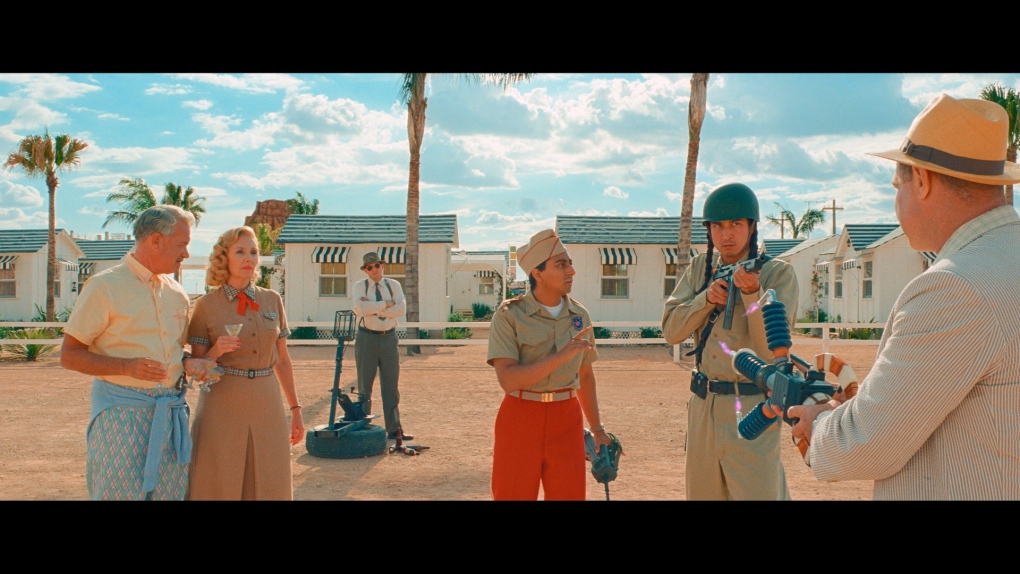
Movie reviews: The mannered obtuseness of Wes Anderson's 'Asteroid City'
CTV
This week, pop culture critic Richard Crouse reviews new movies: 'Asteroid City,' 'No Hard Feelings' and 'Blue Jean'
For better and for worse, there is nothing quite like a Wes Anderson film. The director’s unique production design is all over his new sci-fi comedy “Asteroid City,” but with this film it is clear that whimsy has finally replaced storytelling on his to do list.
This is a twisty-turny one. Like a set of nesting dolls, it’s a film, within a play, within a show hosted by a Rod Serling-esque talking head (Bryan Cranston), within a teleplay written by playwright Conrad Earp (Edward Norton).
The bulk of the “action” takes place in Asteroid City, a remote New Mexico desert town—population 87—where Steve Carell’s motel manager hosts a Junior Stargazer convention. Gifted kids and their parents from all over the state convene to showcase their incredible, and often outlandish, inventions.
It's an interesting group that includes recently widowed war photographer Augie Steenbeck (Jason Schwartzman), father to “brainiac” Woodrow (Jake Ryan) and son-in-law to Stanley (Tom Hanks), movie star Midge Campbell (Scarlett Johansson) and the rough-n-tumble J.J. Kellogg (Liev Schreiber). Along for the ride are singing cowboy Montana (Rupert Friend), teacher June (Maya Hawke), Dr. Hickenlooper (Tilda Swinton) a scientist from the local observatory, and the fast-talking Junior Stargazer awards judge General Grif Gibson (Jeffrey Wright).
When the convention is interrupted by a visiting alien, the whole thing is locked down for a mandatory government quarantine.
Despite the quirky tone and Anderson’s trademarked stylistic choices, “Asteroid City” is a serious film, albeit one laced with a healthy dose of absurdism. A study in how people deal with grief, and the true nature of love, Anderson’s characters experience existential dilemmas, angst born of loss and dissatisfaction. Threats are posed by nuclear bombs and life from other planets unexpectedly dropping by to say hello and children wonder aloud what happens when we die. A shroud of melancholic anxiety hangs over the film, like a shroud, but Anderson’s staging of the film, the meta story within a story structure, obscures the movie’s deeper meanings under layers of style.
The cast, particularly Johansson and Hanks, bring focus to Anderson’s unfocussed story, and Carell, Cranston and briefly Goldblum are having fun, but it sometimes feels the surfeit of characters are there more to decorate the screen than to forward the story.
